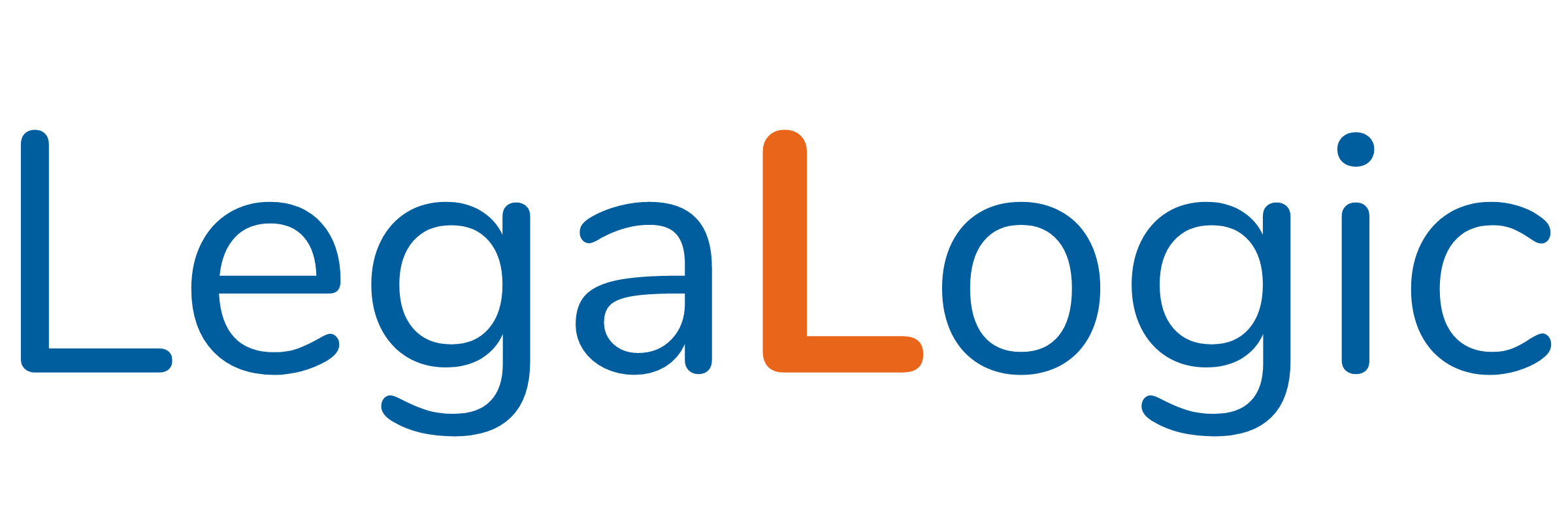Denmark Copyright law: A Step Towards Identity Protection
A landmark court ruling, Denmark has effectively reshaped the limits of individual rights by awarding its citizens sovereign, copyright-style ownership of their inherent human traits, including their face, voice, and likeness. It is not a visionary concept of the future but a tangible court reality today.
This pioneering amendment to the Danish Copyright Act, which was passed in June 2025, is a paradigm shift in legal thinking. It extends the traditional application of copyright—protection of creative labor—to include the core of personal identity. Intended to combat the proliferation of AI-produced deepfakes and synthetic media, the legislation automatically and robustly safeguards individuals, and provides rapid legal remedy. A significant aspect of this law is that it removes the onerous onus of proof of tangible harm, thereby allowing individuals to substantively prove their right to identity.
While the design is very protective in character, the same is done with utmost care to strike a balance thereon, including specific exemptions in favor of satire, parody, public comment and reporting, in order to preserve the freedoms of expression. Denmark’s pioneering model offers a compelling model for all nations worldwide battling to balance the rapid technological progress with the fundamental ideals of human freedom and dignity. It is a clear demonstration of how to harmonize the rapid technology progress with the fundamental ideals of human freedom and dignity. For countries such as India that are facing the challenges of digital identity, the Danish model is an achievable and intellectually sound path of action.
The Evolution of Copyright Law
To fully grasp the significance of Denmark’s law, it is useful to consider the evolution of the law of copyright, which has ever been in the wake of technological innovation. The history of copyright does not lie in the era of the internet, but in the 15th century when the printing press came into existence. It enabled bulk reproduction of printed works and raised the significant issue of ownership and control.
For many centuries, rights were either in publishers or conferred by state authority, focusing on the commercial right to print but not the author’s rights as a creator. The initial material watershed was the Statute of Anne in 1710 in Great Britain. This famous statute shifted focus of ownership from publisher to author, statutorily enshrining the creator’s rights. This was the foundation for modern copyright.
Advancement in Technology Always Paves Way for Increase in Suits
The 1886 Berne Convention internationalized these principles, creating a system of automatic protection of creative works crossing boundaries without needing to register. Through the 20th and 21st centuries, developing technologies such as photography, sound recording, film, and the internet each raised new issues that were met by additional legal evolution. International agreements such as the TRIPS (Trade-Related Aspects of Intellectual Property Rights) Agreement
attempted to harmonize intellectual property law for an internationalized world. Even nations like India have increasingly updated their legislations, like the Copyright Act of 1957, to fit the requirements of the digital age. Despite this established framework, contemporary generative AI threatens a fundamental disruption.
Deepfakes and synthetic media do not simply copy existing works but generate novel, highly realistic material from a person’s identity information. This poses existential threats to individual reputation, privacy, and trust in society that were not meant to be addressed by the traditional framework of copyright law. Denmark’s new legislation is a response to this judicial and ethical vacuum.
Denmark’s Legislation: Key Provisions Towards Identity Protection
Denmark has established a clear legislative boundary in cyberspace. Its new law re-defines copyright as a regulatory tool needed for the management and protection of personal identity, making this protection universal, automatic, and effective.
Universal Protection of Everyone: At the center is the new Section 73-a of the Copyright Act. It grants automatic copyright-type protection to all natural persons irrespective of their public status on their voice, face, and other significant identifying biometric characteristics. Essentially, this is equivalent to one having a right to prohibit the making and distribution of an accurate digital representation of oneself without their specific consent.
Enhanced Protections for Performers: Considering the particular vulnerability of actors, musicians, and other professional performers, a companion Section 65-a provides them with additional protections. The section protects against unauthorized digital copying of their professional image and performances, safeguarding both their personal dignity and commercial living.
Automaticity of Rights: One’s rights are effective and inherent as of the time of birth.
There is no requirement for one’s image to be registered with a government office. This approach ensures that the law protects all individuals in society equally, without administrative hurdles. Broad and Technologically Neutral Coverage: The bill is drafted broadly to ensure that it is applicable to the highest degree in the case of future technological advancement.
It extends current threats such as deepfakes and voice cloning, and is designed to extend to new forms of synthetic media as they appear by focusing on the unauthorized use of “identity-rendering data.” Length of Protection and Legacy Rights: These rights are enforceable throughout the life of an individual and for a period of 50 years after their death. This provision allows an individual’s estate to guard their reputation against posthumous digital exploitation, an issue of increasing relevance. Enabled Enforcement By Presumptive Harm: Perhaps the most innovative and compelling provision of the law is how it enforces.
Someone can seek a take-down of infringing content and a request for an injunction without needing to prove that they were financially or reputational harmed. Their unauthorized commercial use is harm in and of itself. This doctrine of “presumptive harm” does a lot of good to facilitate the individual and make the legal process easier. Balance with Democratic Freedoms: The law is not a blanket prohibition. It has carefully defined exceptions so that democratic discussion remains protected, like legal goals of parody, satire, criticism, news reporting, and academic comment. This equilibrium avoids the law acting as an instrument of censorship.
A Global Analysis:
Universal Digital Vulnerability Denmark’s unified, rights-based system is unique in relation to the legal systems of other nations. United States: The United States does not have a federal law addressing this issue, but it has a patchwork string of “right of publicity” statutes at the state level. These laws were initially established to protect the commercial worth of a celebrity’s name and are often not very well-adapted to protect individual private persons from non-commercial or dignitary harm.
The judicial setting is also complicated by robust First Amendment protections for free speech that make it challenging to implement a coherent federal solution. European Union: The EU framework is premised on human dignity and privacy principles. Biometric data are classified as sensitive personal data under the General Data Protection Regulation (GDPR) and are susceptible to individual rights over its processing.
However, countries like Germany and France give strong “personality rights” protection under constitutions and civil codes. Enforcement, however, is typically by way of privacy law or tort actions for civil liability, possibly less transparent than Denmark’s copyright basis. Most other countries, however, take their lead from more traditional tort-based remedies, e.g., “passing off” or “misappropriation of personality.” These remedies are generally retrospective and require the plaintiff to prove that they have been demonstrably harmed, which is a tall obstacle to overcome in law.
These various systems are an indication of diverging legal traditions and cultural priorities. Denmark’s absolute and universal system offers a new and independent alternative in this global controversy. Historically, “personality rights” were a limited branch of law reserved for celebrities who concerned themselves with unauthorized commercial use of their image. The legislation was created to protect commercial value that came from fame. Artificial intelligence has transformed this landscape completely.
Voice-cloning technology, deepfake tech, and generative AI models are now easily obtainable, making any individual’s likeness manipulable digitally and deployable.
The danger is no longer confined to commercial misappropriation but has expanded to cover a range of serious dangers: Financial Fraud: Cloning a person’s voice from online content to create credible impersonators for financial scams against family members or business associates. Personal Harassment: Producing unwanted explicit material using an individual’s image for
harassment, extortion, or abuse. Political Disinformation: Faking videos of political figures or public officials in order to disseminate disinformation, undermine democratic processes, or foment social upheavals.
Reputational Harm: Creating synthetic content to place a person in a false position of committing obscene or illegal acts, causing tremendous damage to their private and public life. The nature of the threat has shifted from commercial interest to personal security and dignity, affecting all citizens. The Danish law acknowledges this reality by providing an all-encompassing umbrella that protects everyone. Urgnt need for Universal Protection: Future Consequences Offering mastery of their online identity to all citizens is a basic solution to the demands of today’s technology era.
Defending Against AI-Driven Threats
Enforced law that makes responsible for the negative manipulation of synthetic media is a primary defense against identity fraud, deceit, and disinformation dissemination. Creating Individual Agency and Digital Sovereignty: This model provides individuals with direct legal authority over their online personas. It draws neat lines and enables individuals to be the ones in control of how their personal reputation is used, maintaining the idea of individual agency.
Encouraging a Safer Digital Ecosystem, Simple rules and accountability foster public trust in digital communications. By establishing guardrails around dangerous use, such regulations can enable the ethical development of AI in a world where citizens remain secure. Putting Human Dignity First: This judicial ethic holds that the personhood of a human person is not a commodity to be processed and profited from without their consent. It gives legal worth to human dignity and ensures human persons are protected above profit or other interests. Denmark’s legislation can inspire a global debate and a potential legislative trend towards stronger digital identity rights.
As Denmark will hold the EU Council Presidency in the second part of 2025, it is perfectly positioned to champion its strategy as a template for a pan-European directive to create a leading world standard. Future development will expand protections to other unique biometric identifiers, such as a person’s gait or unique behavior. Concurrently, we can expect technologies to emerge that aid enforcement, including advanced AI-powered detection tools for marking synthetic media, watermarking in the digital realm to ensure original content, and blockchain-based systems to manage consent. This development represents an essential co-evolution of our legal and technological frameworks.
Implications for India, a nation at the intersection of a thriving digital economy and a complex legal system, is facing an urgent challenge. The arrival of generative AI threatens its 1.4 billion citizens and thus it is important that it has a robust legal system. India’s digital identity and privacy laws are dispersed and reactionary and not applicable to proactive synthetic media use. Denmark’s pioneering law offers a potential template for India’s digital destiny.
India’s current legal framework for combating identity abuse is reactive and patchy
The Constitution ensures the Right to Privacy, but its enforcement is slow and laborious. The victims have to sue for violation of the Constitution in court, which is inefficient and expensive. The Copyright Act, 1957, safeguards original works but not the natural persona of individuals as “works.” Deepfakes, new media, leave a legal lacuna. They are information derivatives, not copyright material, rendering claims of copyright complicated and context-dependent, primarily to the advantage of public figures whose images are worth money.
The Information Technology Act, 2000, contains identity theft (Section 66C) and privacy invasion (Section 66E) provisions, but they are antiquated. Section 66E largely addresses taking and posting photographs in secluded places, which is not how deepfakes are made.
The IT Rules of 2021 make social media intermediaries delete certain content, but the responsibility is generally on the user and takes time. India’s Digital Personal Data Protection Act, 2023, creates a framework of consent for processing personal data and biometric data. It mandates the most stringent regulations primarily to control “Data Fiduciaries” to keep corporations and the state from exploiting data. Yet, it is less effective for individuals to enforce their rights against deepfake creators and distributors. Its architecture is data processing, not ownership of identity.
Denmark law shifts from a reactive, harm-based to a proactive, rights-based model. Extending the same philosophy would acknowledge each Indian citizen’s inherent copyright-like right over their digital persona. Such a shift would give power to the people by automatically granting them ownership of their identity-generating data, transferring control from platforms and perpetrators to the individual. The legislation would change from “I was harmed” to “You used my property without consent,” lightening legal burdens and accelerating the justice process. It would identify liability according to human rights, directing tech platforms, law enforcement, and courts. A simple “notice-and-takedown” mechanism would see social media intermediaries move decisively when unauthorized digital representation is invoked.
India’s Digital India Act (DIA) is an architecture of legislative reform. Making a universal right to identity protection enforceable in DIA would make it the hub of India’s digital space. India has a massive population of more than 1.4 billion, which poses problems to its current system that functions for a population of a little less than six million. India requires a robust, scalable mechanism such as specialist digital tribunals or an AI-assisted online platform in order to prevent judicial overload.
Even with these setbacks, India has potential. Through emulating Denmark’s trailblazer method, India can put an end to archaic regulatory models. Through its tech capabilities, India can safeguard citizens and lead the world in crafting a legal system for synthetic media, espousing digital governance in the Global South, and upholding human dignity.
Conclusion
Denmark’s legislative development is a step towards the emerging coalescence of law, technology, and society. By attributing a picture of a person, a status similar to a copyrighted work, Denmark acknowledges that dignity and autonomy of the individual are essential values that must be fostered in the era of the digital revolution.
The law understands that artificial intelligence risks are universal and therefore require universal protections. With this model of law making the globe take note, nations like India have an urgent choice to make: to proactively adapt their laws to safeguard their citizens or risk opening their population to the harms.
Lastly, Denmark’s move serves as a harsh reminder that the role of law is not to suppress innovation, but to direct it in a way that supports our humanity in an increasingly technologicall




